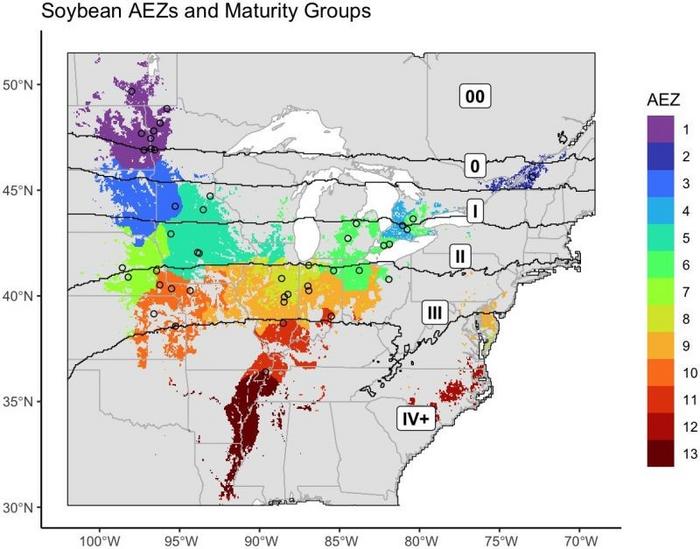URBANA, Ill. — In the quest to optimize crop productivity across environments, soybean breeders test new cultivars in multiple locations each year. The best-performing cultivars across these locations are selected for further breeding and eventual commercialization. However, a new study from the University of Illinois Urbana-Champaign suggests current soybean testing locations may not be delivering breeders the biggest bang for their buck.

Credit: University of Illinois Urbana-Champaign
URBANA, Ill. — In the quest to optimize crop productivity across environments, soybean breeders test new cultivars in multiple locations each year. The best-performing cultivars across these locations are selected for further breeding and eventual commercialization. However, a new study from the University of Illinois Urbana-Champaign suggests current soybean testing locations may not be delivering breeders the biggest bang for their buck.
“We met with most of the soybean breeders in public research universities across the Midwest and asked where they set up their trials over the last 30 to 40 years,” said Nicolas Martin, an associate professor in the Department of Crop Sciences, part of the College of Agricultural, Consumer and Environmental Sciences (ACES) at Illinois. “We found that they tend to select these sites a little bit by tradition.”
Convenience is a strong draw, as well.
“Certain types of sites are overrepresented because of tradition rather than their environmental utility; for example, sites near large research universities like Urbana, Illinois; Ames, Iowa; or Lafayette, Indiana. It’s not that we need a lot of data from those environments, but those test sites are convenient to access where cultivars are being developed,” said doctoral student Catherine Gilbert, the study’s first author.
The team analyzed long-term climate data and records of soybean trials to develop two new sets of maps that would help breeders strategize the placement and use of test sites. The first map represents common environments and favors generalist phenotypes that do well under most conditions. The second emphasizes environmental variation, optimizing specialized phenotypes that perform well in specific conditions.
“Breeding programs may have different philosophies,” Martin said. “One of them is to mimic where most farmers are growing. Others are looking to avoid redundancies in the locations where you train your cultivars. If you put them under diverse growing conditions, you see which ones are more resilient.”
In both cases, the analysis suggests breeders need to redistribute testing sites. Gilbert says there would need to be some fairly radical changes, including fully opening and closing test sites and dropping and adding hundreds of soybean varieties across the map.
“To optimize testing for general adaptation, we should expand in southern Minnesota, Iowa, and eastern South Dakota,” she said. “And for specialized adaptation, we need to put more testing sites in Nebraska and, again, in South Dakota.
When Martin and Gilbert presented their results to cooperating breeders, most said they would consider the information in decisions around moving, opening, or closing testing sites.
Basing testing networks on how well they represent the soybean growing environment, rather than on tradition or convenience, means the new maps can better account for a changing climate. The researchers hope their approach can help breeding programs select more resilient cultivars in the future.
“We think our results could guide future cultivar adaptation to growing conditions farmers are running into more frequently. Thus, our goal is to improve the environmental representation of the trials, which would let us more accurately evaluate cultivars based on their performance and select better-performing varieties,” Gilbert said.
Martin added, “The proposed site selection protocol not only enhances the accuracy of our cultivar testing but also opens doors to new regions exploring soybean cultivar adaptation. By allocating new resources in underrepresented areas that hold potential for soybean cultivar resilience, we can foster a proactive stance in cultivar development.”
The study, “Using agro-ecological zones to improve the representation of a multi-environment trial of soybean varieties,” is published in Frontiers in Plant Science [DOI:10.3389/fpls.2024.1310461].
Journal
Frontiers in Plant Science



